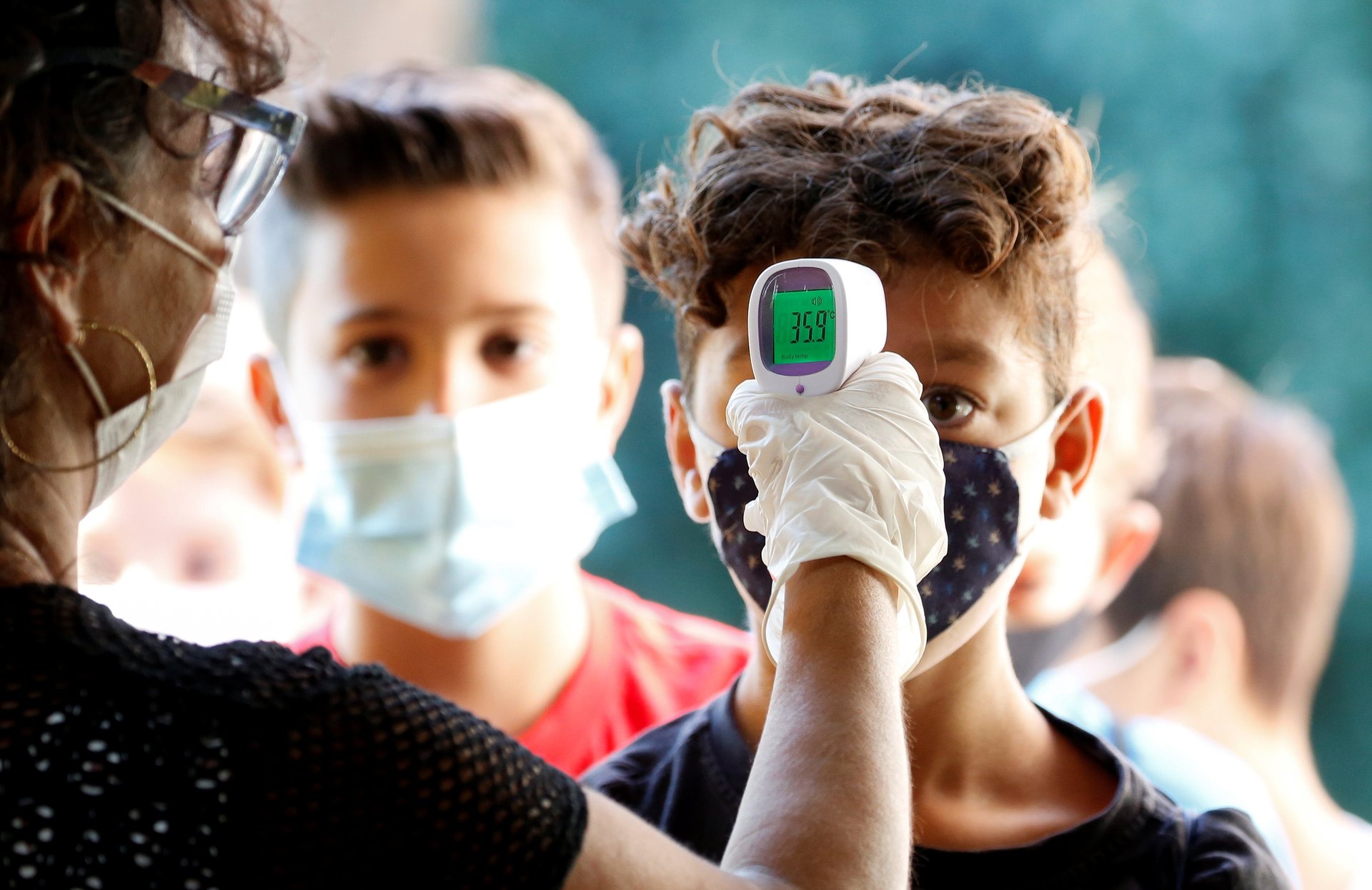Do temperature checks for Covid-19 work?
Among the many out-of-body experiences created by this pandemic—moments where I’ve thought, “what would Pre-Covid Me think if she saw me like this?”—none have marked me quite so much as having my temperature checked at the entrance of indoor spaces.


Among the many out-of-body experiences created by this pandemic—moments where I’ve thought, “what would Pre-Covid Me think if she saw me like this?”—none have marked me quite so much as having my temperature checked at the entrance of indoor spaces.
Traveling through Turkey in early September, it at first felt alien to approach restaurants, tourist sites, and hotels with my wrist outstretched, waiting for stationed guards to measure my body heat with a gun-like device and (hopefully) wave me through. By the end of the trip, it was perfectly mundane.
Temperature checks are commonplace in Turkey and many other countries, and are quickly becoming more popular in the US. They’re happening in airports, in schools, and increasingly in retail environments like shops and restaurants. But experts and consumers have questioned whether they are effective at reducing the spread of Covid-19—and if they’re not, then why keep doing them at all?
No-contact thermometers are used to check people for elevated temperatures, a sign that they could be infected with Covid-19. Fever was identified early in the pandemic as a common symptom. But a growing body of evidence indicates that temperature checks might not be as effective as they might seem.
Several studies have shown that a large proportion of patients hospitalized for Covid-19 do not present with a fever—43% of patients upon admission according to one, 30% according to another. What’s more, an estimated 40% of those infected with Covid-19 are thought to be totally asymptomatic. A separate study found that 46% of travelers with Covid-19 would not be identified by temperature checks.
Temperatures can also vary during your daily life. Someone who just hustled a few blocks might read as having a high temperature when they are healthy. And someone with a fever who took a drug like ibuprofen to lower it wouldn’t get caught by the scans, though they might be transmitting the virus to others.
It’s not just the quirks of biology and behavior that make temperature checks less effective. Across health organizations, there’s some confusion about what thermometer reading constitutes a fever. There are also reports of people charged with conducting temperature checks who are not adequately trained in how to use the devices. Others don’t have the right devices to begin with, or are using methods that are inaccurate.
The medical community doesn’t even agree on the best way to use no-contact thermometers in the context of Covid-19. While many establishments screen patrons’ foreheads, one non-peer reviewed study conducted in China found that wrist measurements were “more stable” than forehead measurements.
Even Anthony Fauci, the director of the National Institute of Allergy and Infectious Diseases and the US’s top coronavirus expert, has soured on temperature checks. “We have found at the NIH, that it is much, much better to just question people when they come in and save the time, because the temperatures are notoriously inaccurate, many times,” he said in August.
And yet, the world keeps doing them. The US Centers for Disease Control and Prevention (CDC) addresses temperature checks in its most recent guidance for reopened workplaces, calling them an “optional strategy that employers may use.” In New York City, where indoor dining will soon be allowed for the first time since March, restaurants will be required to conduct temperature checks before admitting diners inside. The CDC suggests temperature screenings for staff members at restaurants and bars, though not their patrons.
Doing temperature checks is like panning for gold with a wide sieve; it’s not guaranteed to pay off, but sometimes you get lucky. Önder Ergönül, chair for infectious diseases at the Koç University School of Medicine in Istanbul, describes it as a “tedious but minimally effective” measure and says that the hospital he practices in recently identified two cases of Covid-19 through no-contact thermometers—not a huge number, given the thousands of patients that walk into the hospital every week, but not nothing either.
Most experts agree that temperature checks are a form of theater, a performance intended to put our minds at ease. As James Hamblin writes in The Atlantic, “The practice is sort of like spraying down the sides of buildings, showering football players in hand sanitizer, or deep cleaning an office carpet. These things might make us feel safer, but they may not keep us safe if they actually cause us to let our guard down.”
I can attest to the performance aspect of this exercise. While I had doubts about the effectiveness of the temperature checks as they were being performed on me, they nonetheless made me feel marginally safer. Especially when paired with other prevention methods, such as health questionnaires and other screening tools, temperature checks may do a little good.
Ergönül argues that the theater is partially the point. When someone steps into a restaurant or hotel, they’re at more risk of exposing themselves and others to coronavirus. The no-contact thermometers help to remind them that they “have to care about the seriousness of the pandemic.”
That’s why businesses may choose to implement temperature checks, even if they’re not required. As consumers navigate their risk tolerance with their desire for normal life, they’ll rely more heavily than ever on trust. If consumers feel safer, they’re more likely to spend.
Additional reporting by Alexandra Ossola